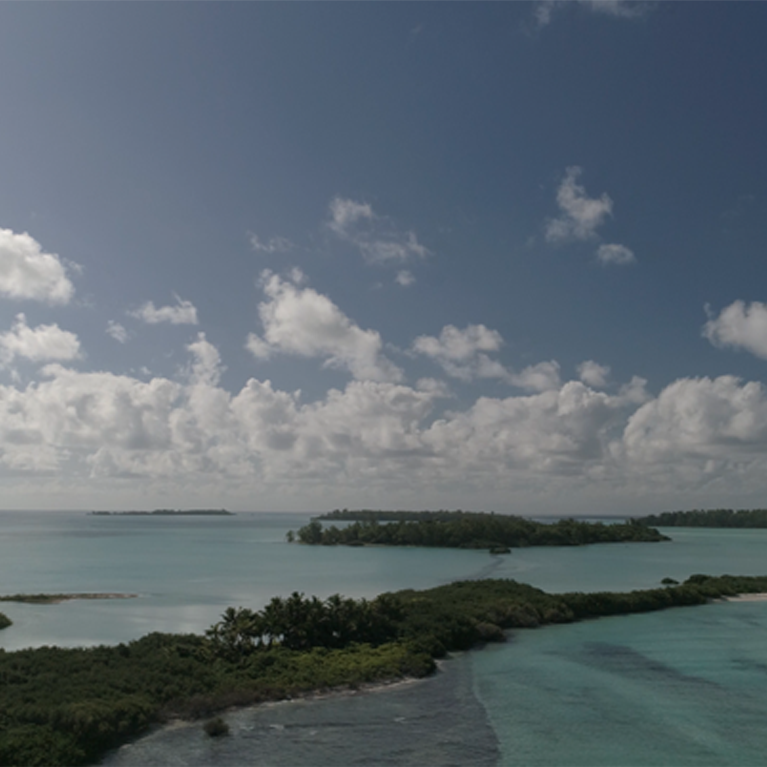Who is where and when: Assessing turtle populations using drones
I will be using drones on St Joseph Atoll, to conduct aerial population densities of both green (Chelonia mydas) and hawksbill (Eretmochelys imbricata) sea turtles, whilst outlining which habitat types are occupied by each species. I will use this information to produce habitat management recommendations that will be applicable in other areas of the Seychelles, as well as on a global scale.
I started my career in conservation at 18 years old, working with western lowland gorillas at a wildlife park in the UK. From there, my love of wildlife and the natural world grew into a burning desire to experience more, and to play a more active role in conservation. I returned to education several years later to complete a diploma in Zoo and Aquarium Animal Management, which provided me with a new understanding of my job. It drove me on even more to want to participate in the “bigger picture”.
After graduating college, I spent more time travelling, visited amazing...
Assessing juvenile green and hawksbill sea turtle populations and habitat use on St Joseph Atoll
The project has two key objectives. Firstly, to provide a population estimate of juvenile green and hawksbill sea turtles using St Joseph Atoll as a sub-adult feeding ground. The second is to survey habitat use of the juvenile turtles, to aid conservation and management recommendations applicable to the Atoll and other areas of the Seychelles.
52% of turtle species are threatened with extinction due to fishing pressures, habitat loss (through coastal development, pollution and increased anthropogenic activities), and climate change. If we are to reduce this number, a deeper understanding of turtle populations and habitat usage is vital to better conserve important areas for turtles (Howell et al. 2019).
This project aims to better understand the relationship between juvenile turtles exiting their pelagic stage and entering sub-adult feeding grounds, which play a crucial role in their development to maturity (Makowski, Seminoff & Salmon, 2005). St Joseph Atoll is an important area within the Seychelles for green and hawksbill sea turtles. This area is the perfect site to assess how many juvenile turtles rely on the Seychelles to develop and contribute to their environment. It also provides the opportunity to conduct habitat use surveying in an area free from anthropogenic activity. From this base understanding of important feeding grounds for juvenile turtles, it allows habitat management recommendations to be made. This can benefit the conservation of the juvenile turtles in locations where they face greater pressures.
As anthropogenic activities increasingly impact marine habitats, our need to understand the species affected by them also increases (Berriozabal-Islas et al. 2020). Presently, only 7.9% of global marine habitats are protected areas (Dickinson et al. 2022). Habitat degradation can have major effects on the growth and structure of a species (Williamson et al. 2014), an example of this are sea turtles. Sea turtles are vital for the working of the ecosystem. Green and hawksbill sea turtles regulate the ecosystem through dietary behaviour, and with juvenile turtles spending many years in shallow water, they are a strong indicator of a healthy ecosystem (Aguirre & Lutz, 2004). Sea turtles also play a crucial role as flagship species for greater conservation efforts, raising public awareness to the importance of ocean conservation (Godley et al. 2020). There is a need for a deeper understanding of juvenile sea turtles exiting their pelagic stage, and their relationship with shallow habitats (Seney, Higgins & Landry Jr., 2010).
Sub-adult green (Chelonia mydas) and hawksbill (Ertmochelys imbricata) turtles move from pelagic to sub-adult feeding grounds until they reach sexual maturity (Makowski, Seminoff & Salmon, 2006). There is limited research into multiple species of sea turtles sharing habitats during developing years, which creates restrictions when making marine habitat management and protection decisions (Lamont & Iverson, 2018). A better understanding of which habitats are necessary for each species, and which provide rest and foraging opportunities, will allow for successful management and protection recommendations to be made (Gorham et al. 2014).
Previous research into the value of sea turtles as umbrella species within protected areas, has shown the importance of drones as a conservation tool (Dickson et al. 2022). Using drones to survey turtle habitat use and the negative anthropogenic effects on their habitats, has supplied potential application material for protected areas (Shimada et al. 2017).
Providing management recommendations and supporting data for the protection of sea turtle habitats is the best way of mitigating the anthropogenic threats facing these species (Wilson & Tisdell, 2001). It is also a practical way to assist with the mitigation of the effects of climate change, another growing threat to sea turtles worldwide. Seagrass is a carbon sink, contributing to 18% of total oceanic carbon storage (Stankovic et al. 2021), and providing a main foraging site for sea turtles worldwide. This habitat not only supports turtles, other marine biodiversity, human food security, and as mentioned, will mitigate the negative effects of climate change on humans (Unsworth et al. 2019).
Broadening our understanding of the species life cycle, through population densities and habitat surveys, will aid with the future management decisions of shallow water habitats. Providing necessary data for aiding the creation of legislations and restrictions for human use on important habitat types will enable the successful development of juvenile turtles. Furthermore, reducing pressures on vital habitats and mitigating the negative effects of climate change.
– A population density of green (Chelonia mydas) and hawksbill (Eretmochelys imbricata) sea turtles using St Joseph Atoll upon exiting their pelagic stage.
– Surveying habitat usage of juvenile turtles to aid conservation and management recommendations of St Joseph Atoll and beyond.
– Expand the research surrounding juvenile turtles in sub-adult feeding grounds, and the use of drones as a conservation tool.
– Creating a methodology that can be replicated for future studies for habitat and population density surveying.


